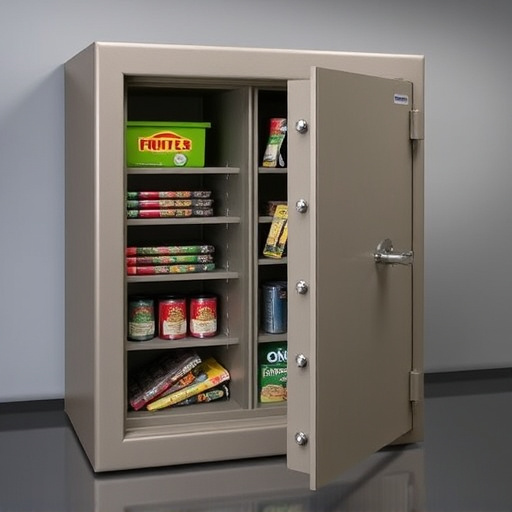Understanding criminal covert storage of fake cleaning products is crucial for safe home security. Spotting fakes through packaging inconsistencies and brand research prevents dangers. Check official certifications, labels, and purchase from trusted sources to ensure product security. Global authorities enhance quality control and tracking to protect consumers from fake goods, restoring trust in cleaning solutions.
In today’s market, consumers are increasingly concerned about the safety and authenticity of their household cleaning products. This article explores the insidious practice of covert storage, where counterfeiters hide fake cleaning products within legitimate-looking packaging. We delve into understanding these stealthy techniques, identifying red flags, ensuring product safety, and exploring the regulatory implications that affect consumer trust. By arming yourself with knowledge, you can make informed choices to keep your home clean and safe from fraudulent products.
- Understanding Covert Storage Techniques
- Identifying Fake Household Cleaning Products
- Ensuring Product Safety and Authenticity
- The Impact on Consumer Trust and Regulations
Understanding Covert Storage Techniques
Understanding how criminals employ covert storage techniques is crucial for safeguarding your home and family from potential dangers, especially when it comes to fake cleaning products. These methods involve discretely hiding substances in everyday items or spaces that might go unnoticed by homeowners. For instance, a thief might conceal illicit substances inside seemingly innocent-looking cleaning bottles, packaging them as common household cleaners. Such tactics make it easier for them to bypass security measures and avoid detection during initial inspections.
By understanding these covert storage practices, you can enhance your home’s security. Simple precautions like keeping cleaning products in locked cabinets, using childproof locks, or storing them away from the main living areas can deter criminals from targeting them. Additionally, being vigilant and regularly checking for any unusual items or packages left behind could provide an extra layer of protection, ensuring your home remains a safe haven free from fake cleaning product-related security risks.
Identifying Fake Household Cleaning Products
Identifying fake household cleaning products is a crucial step in ensuring your home remains safe and secure. Consumers often rely on popular brands they trust, but counterfeiters target these very brands to sell inferior imitations. One way to spot a fake is by examining the packaging for any inconsistencies or errors in spelling and graphics. Authentic products have precise labeling, while fakes may display strange fonts or blurry designs.
Additionally, checking product codes and barcodes can be a game-changer. Genuine items typically have unique serial numbers and QR codes that allow you to verify their authenticity online. If the cleaning product’s packaging lacks these details or provides conflicting information, it could be a red flag. Stay vigilant and research brands thoroughly to avoid falling victim to fake Cleaning Product Security threats lurking in your local supermarket aisles.
Ensuring Product Safety and Authenticity
When it comes to ensuring product safety and authenticity in the household cleaning industry, consumers must be vigilant against the prevalence of fake cleaning products. These counterfeit items not only pose significant safety risks but also threaten the integrity of genuine brands. To safeguard yourself, always check for official certifications and labels on cleaning products. Reputable manufacturers adhere to strict quality control measures, ensuring their products are safe and effective.
One effective way to verify a product’s authenticity is by purchasing from trusted retailers or directly through the brand’s official website. Additionally, consumers can leverage modern technology like QR codes or unique batch numbers to cross-reference with the manufacturer’s database, confirming the product’s legitimacy and preventing potential harm caused by fake cleaning products.
The Impact on Consumer Trust and Regulations
The discovery of covert storage, where fake household cleaning products are concealed within seemingly genuine packaging, has significantly shaken consumer trust. This deceptive practice not only poses potential health risks but also erodes confidence in the market’s safety regulations. As consumers rely on these products for daily sanitation, the presence of fraudulent items undermines the assurance that they are purchasing legitimate, effective cleaning solutions.
Regulations governing consumer goods, particularly those related to health and safety, are now under scrutiny. Authorities worldwide are responding by implementing stricter quality control measures and enhancing product tracking systems. The goal is to ensure that what’s on the market is genuine and safe, deterring manufacturers from engaging in such fraudulent activities and protecting consumers from potential harm.
In conclusion, understanding covert storage techniques and identifying fake household cleaning products is paramount for consumer safety and authentic purchasing. By being vigilant and informed about these practices, you can ensure product safety and maintain trust in an increasingly complex marketplace. Stay proactive, check for genuine certifications, and support reputable brands to foster a safe and reliable environment for all consumers.
